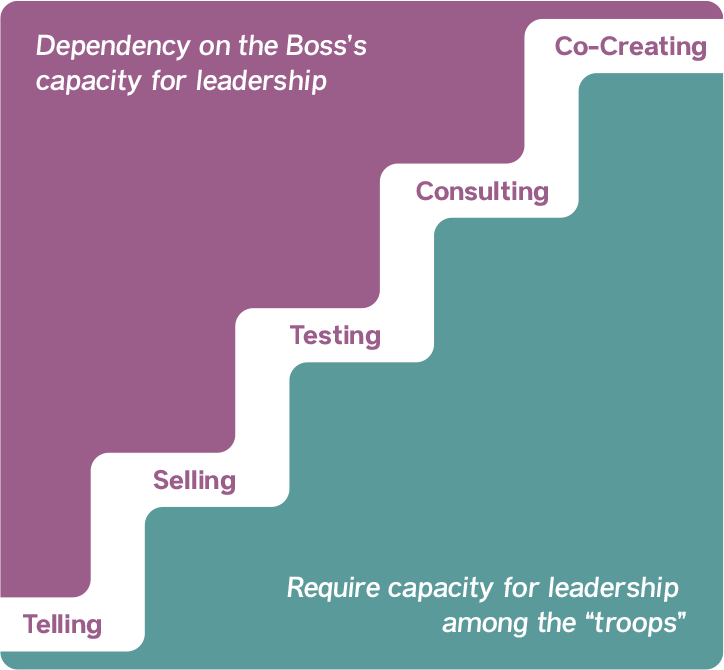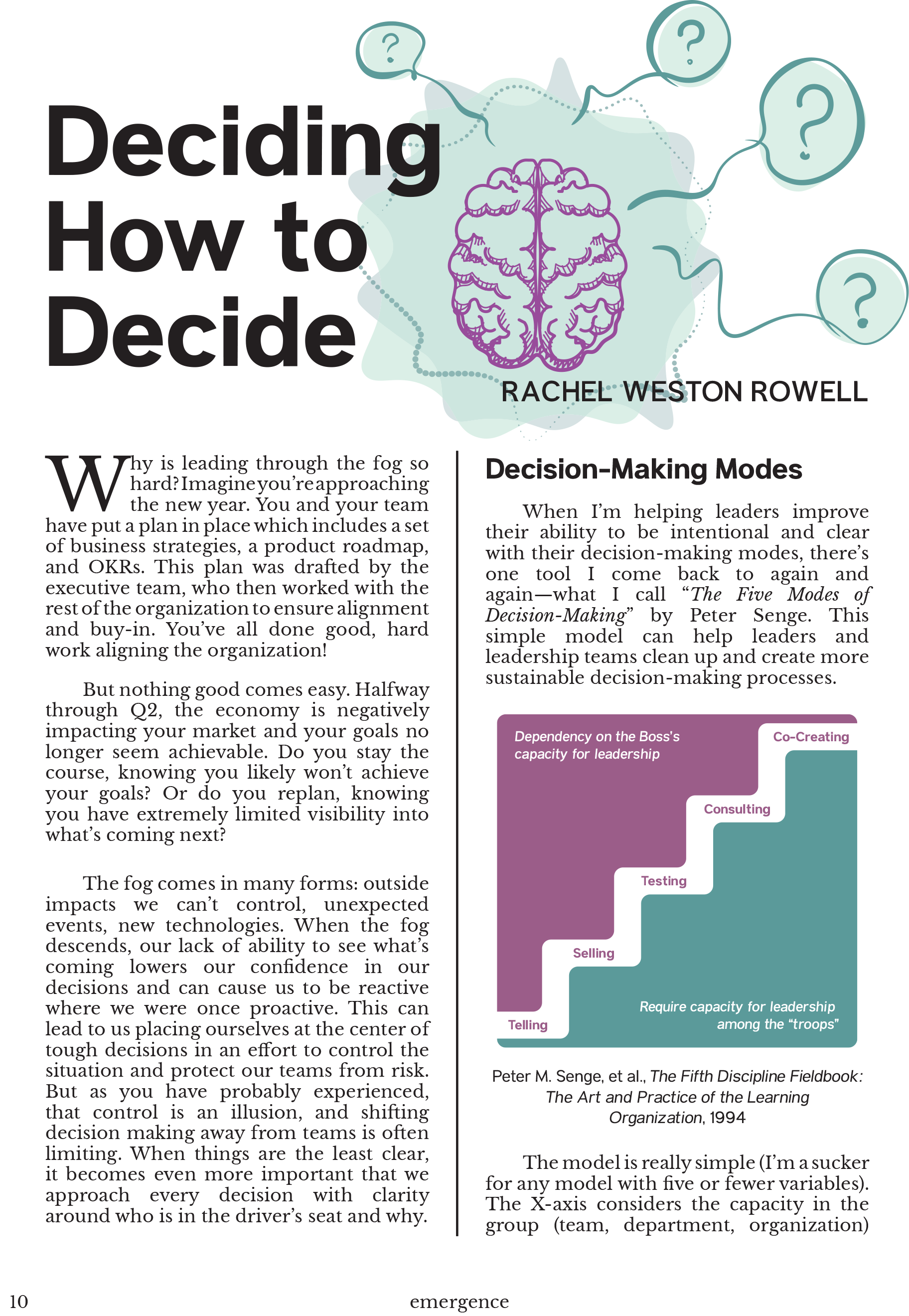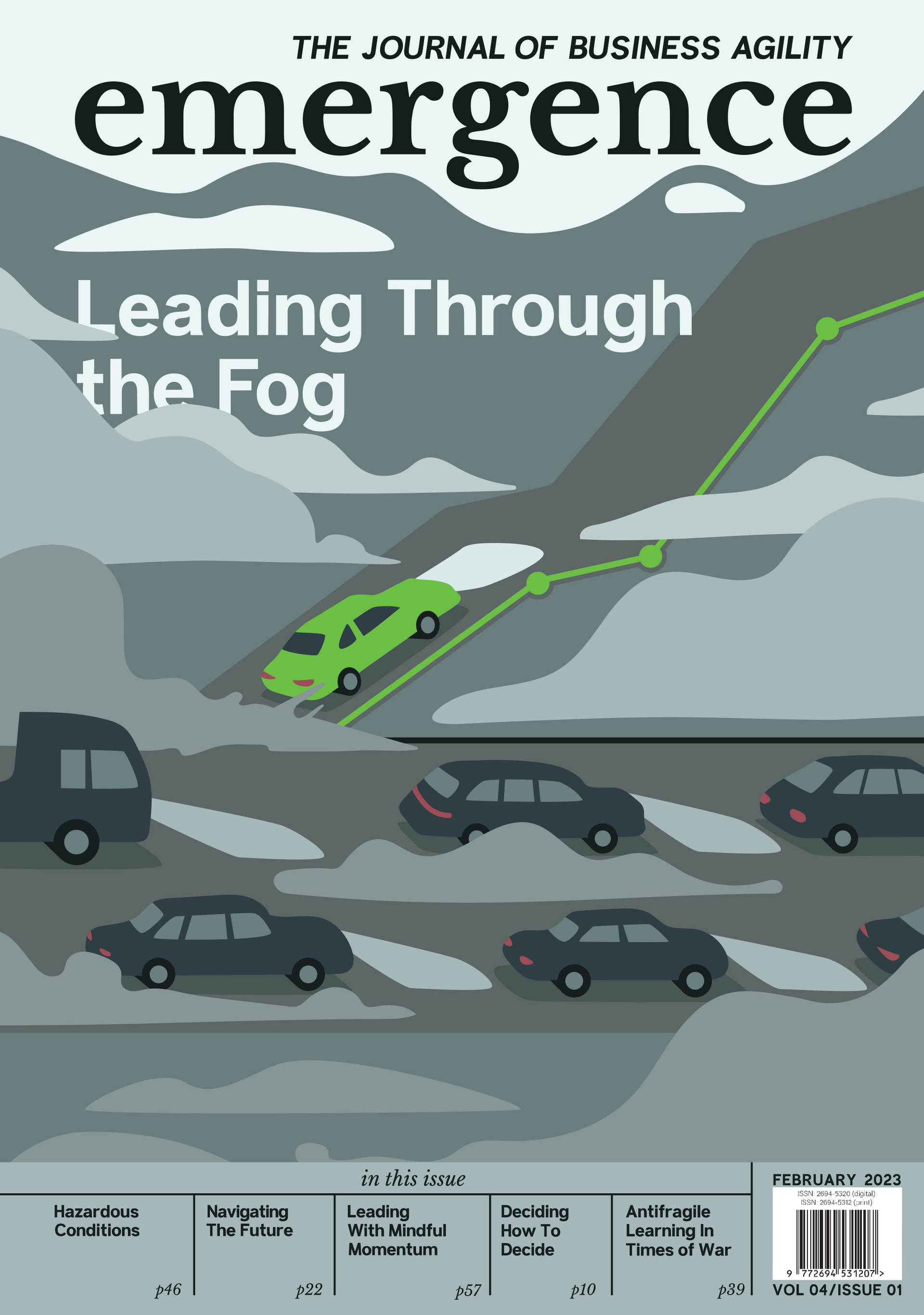Deciding How to Decide
Why is leading through the fog so hard? Imagine you’re approaching the new year. You and your team have put a plan in place which includes a set of business strategies, a product roadmap, and OKRs. This plan was drafted by the executive team, who then worked with the rest of the organization to ensure alignment and buy-in. You’ve all done good, hard work aligning the organization!
But nothing good comes easy. Halfway through Q2, the economy is negatively impacting your market and your goals no longer seem achievable. Do you stay the course, knowing you likely won’t achieve your goals? Or do you replan, knowing you have extremely limited visibility into what’s coming next?
The fog comes in many forms: outside impacts we can’t control, unexpected events, new technologies. When the fog descends, our lack of ability to see what’s coming lowers our confidence in our decisions and can cause us to be reactive where we were once proactive. This can lead to us placing ourselves at the center of tough decisions in an effort to control the situation and protect our teams from risk. But as you have probably experienced, that control is an illusion, and shifting decision making away from teams is often limiting. When things are the least clear, it becomes even more important that we approach every decision with clarity around who is in the driver’s seat and why.
Decision-Making Modes
When I’m helping leaders improve their ability to be intentional and clear with their decision-making modes, there’s one tool I come back to again and again—what I call “The Five Modes of Decision-Making” by Peter Senge. This simple model can help leaders and leadership teams clean up and create more sustainable decision-making processes.
The model is really simple (I’m a sucker for any model with five or fewer variables). The X-axis considers the capacity in the group (team, department, organization) for direction-setting and learning. The Y-axis details the degree of active involvement from the group. So, when we are telling, we assume low capacity in the group to engage in direction setting and thus low team involvement, with high involvement from the leader. When we are co-creating the opposite is true.
As Senge describes it, we are making a choice about how much we are depending on the “boss” (leader) or the “troops” (team) to lead the way.
None of these modes are good or bad; they are just needed in different scenarios.

Telling
As a leader, you may “tell” your team that we are establishing a temporary hiring freeze; this isn’t open for debate or discussion. In dense fog environments, you should leverage this when the information required to make a decision is sensitive and cannot be shared.
Selling
You may decide that the engineering organization needs to stop working on a new product and refocus on core customer needs in order to address revenue issues. In selling, you are open to a bit of feedback, and while it’s unlikely you are going to change your decision, you may change your messaging. This approach can soften the blow of centralized decisions by explaining the rationale. Keep in mind that “selling” isn’t “fibbing”; tell the truth to the fullest extent possible about why you are making this decision.
Testing
Now we start to shift from having a finalized decision to having something more draft-like. You may present your team with a plan to shift market fo-cus to take advantage of a strategic bet. You’ve done your research, but you want the team to poke holes in your decision, and you are open to iterating based on their “test” of your idea. In the fog, when information is arriving inconsistently, this can be a good approach. It allows you to move quickly while deepening buy-in.
Consulting
Here, your draft is even less well-formed. You may have checked in with key constituents and done some homework, but you fully expect the group to “consult” and help you get the decision to done.
Co-Creating
This is the ultimate space of collaboration where you, as the leader, are working shoulder to shoulder with the group and developing the decision together.
While consulting and co-creating may seem challenging to leverage when fog is heavy and stress is high, this may be the exact moment when you need the insights and experience of your “troops” to make informed decisions about how to proceed.
I was once leading a professional services team through a period of rapid scaling. We were running into contract-related problems, specifically when contracts were being approved with problematic terms and descriptions of work, causing headaches and upset for our customers and us. At the same time, everything in our world was moving very quickly as we rapidly added customers and team members.
I looked at the situation and thought, “We clearly don’t have a good handle on contracts. But everyone in my operations team is so busy! I need to fix this quickly, so it’s probably best if I just review all the contracts myself before approval to make sure we don’t run into this issue again.”
Oops. My intention was good—I was trying to protect my operations team by reducing their workload and stress. But by making this decision alone, without their input, I actually made the situation worse by not leveraging the wisdom of my team to improve and scale. The result was that I slowed down an already broken process. I also made myself so busy that I began dropping balls in other parts of the business. It was a disaster that was only fixed once I slowed down, brought in my team, and asked them to help me solve the problem.
Clarity of Intent
We’ve all experienced the impact of a decision-making moment without clear decision-making intent. Have you ever been invited to a meeting where you thought your role would be to participate in exploring and coming to a decision? You prepped, you researched, you came ready to listen and debate… but when you got to the meeting, you were told the decision was already made. This meeting was just to inform you. What a waste of your time!
Or perhaps you recall a reverse situation. You expected you were going to a meeting where leadership would (finally!) share with everyone the decision that would allow the organization to move forward on a project, only to discover the leader hadn’t decided anything and was expecting you to provide them with information, insight, and opinions about what to do. But you weren’t prepared for that discussion! As a result, you felt caught out, unprepared, and stressed. How are we ever going to move forward?
Regardless of what mode you employ, the gift you can bring to any decision-making process is clarity around your intention. Senge’s model is a great shorthand for those conversations. You can let your team know, “We are meeting to discuss our Product Led Growth strategy. This will be a consulting conversation, and I’ve attached my initial thoughts for you all to review in advance.” This allows your team to show up prepared and engaged in the right way, speeding up the process by increasing alignment and trust.
As you assess your mode, you may discover that what you want to do is communicate your decision—you need to tell or sell. This can be accomplished in an all-hands or other forum, or perhaps even by email with no meeting at all, allowing you to move more quickly. You may instead determine that what you are seeking is commitment to your decision—you want to test or consult. Meetings with valuable and concise pre-reads, along with good facilitation to move to alignment, work well for these modes—quarterly planning against established strategies or action-driven QBRs are good examples. When you aren’t sure of your decision or are sure that your decision will be much better with input from the team, you want collaboration.
This is the hardest work in decision-making, but also the most sustainable. A meeting that starts with clear context-setting to establish a shared baseline of understanding and then a well-facilitated process to move people through healthy conflict can generate
consultative or co-created decisions that are aligned, innovative, and much more likely to stick. Executive-team strategy sessions and R&D team sprint-planning sessions are both examples of collaborative decision-making meetings.
Guardrails for Foggy Days
We have all been dealing with fog for the last few years. Between the COVID pandemic, global unrest, and economic turmoil, businesses and leaders continue to be challenged in seeing what’s coming next. As the economic system continues to churn, many tech companies are deciding to “restructure” or to “reset” (corporate lingo for layoffs and reorgs).
Recently, many of the largest tech companies “restructured” thousands of people in massive layoffs. 10-20 year veterans found themselves suddenly locked out of company systems with only an email notice of their termination. They posted their frustrations and upset to social media sites like Twitter and TikTok.
I don’t know what discussions went into the decision-making for these layoffs. But many social media users saw these posts and reacted with dismay. How could these huge, successful companies disregard their employees’ years of service with such a disrespectful termination, they asked. Didn’t they deserve better? Many perceived these actions as emblematic of companies whose values had shifted from focusing on hiring and keeping great employees to a ruthless focus on corporate profits (or worse).
When we are in the fog, it’s easy to drive off the road. By leveraging existing guardrails, we can stay more aligned to our values, our intent, and our organization.
• Vision: Barring such severe changes that your company purpose is no longer valid, this should stay stable and can be a bedrock upon which your nearer-term tough decisions can rely.
• Values: Who you are to each other and to your customers should not change, and your decisions (even in hard or uncertain times) should reflect your core values. If you find yourself veering away from this, stop and assess. Breaking core values erodes culture and is very difficult to recover from.
• Mission: What you want to accomplish in the long term should be somewhat stable, but this is one place where significant changes in the market may cause you to need to pivot and replan.
Without the guardrails we can say “yes” to anything—there’s no way to evaluate decisions. Guardrails enable our own decision making, but more importantly they support decision making by next level leaders and teams, creating environments where we can use higher-engagement decision modes even in times of uncertainty. They also protect our culture by reminding us of who we are, regardless of the challenges we are facing.
It’s Q2 and the fog is thick—what are you going to do? Consider the decisions ahead of you. Which would most benefit from knowledge outside of your own head? Who can you share key information with to expand your decision-making team? If in doubt, start with a perspective that each decision could be made through
consulting or
co-creating and back away from that only when urgency or information security require it. A collaborative mindset is always a good place to begin when the fog grows thick.
This content was originally published in the February 2023 Edition of Emergence, The Journal of Business Agility. It has been republished here with the permission of the publication.
What is Emergence?
Emergence is the Journal of Business Agility from the Business Agility Institute. Four times a year, they produce a curated selection of exclusive stories by great thinkers and practitioners from around the globe. These stories, research reports, and articles were selected to broaden your horizons and spark your creativity.








